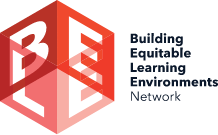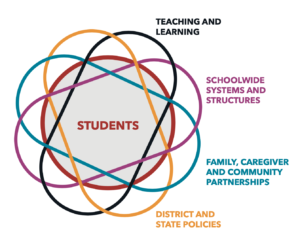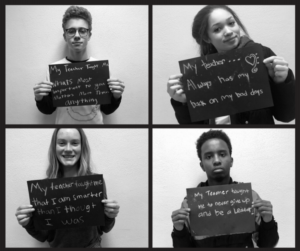[Cross-posted from the BELE Network Medium]
The BELE Network in partnership with Schoolhouse Connection
COVID-19 has disrupted the lives of millions of students across the country, but perhaps none feel this crisis as acutely as undocumented students experiencing homelessness, who may have difficulty accessing even the most rudimentary of safety nets. Thankfully, there are still plenty of folks on the front lines using proven strategies and tactics to ensure that they are getting the support that they need.
Schoolhouse Connection is one such group. As a non-profit working to overcome homelessness through education, they work to keep the needs of undocumented students in the spotlight. They recently led a webinar featuring a youth rights lawyer, a McKinney-Vento liaison, and a student with an immigrant background to highlight ways to support undocumented students and ensure that districts and schools are complying with McKinney-Vento. They have graciously allowed us to share a summary of it here.
The content of this post is adapted from a SchoolHouse Connection webinar led by Patricia Julianelle, Kathi Sheffel, and Mirka Mendez on April 28, 2020.
Before diving into the practical tips, it’s worth clarifying the rights of students experiencing homelessness.
What is the McKinney-Vento Act?
The McKinney-Vento Act is a federal law that ensures the right of students to go to school even when they are homeless or don’t have a permanent address. Children and youth who lack a fixed, regular and adequate nighttime residence are covered under this act. The Act aims to reduce barriers that have prevented many homeless youth from enrolling, attending, and succeeding in school.
Identified McKinney-Vento students reported their nighttime accommodations as:
- Sharing the housing of others due to loss of housing, economic hardship, or similar reason (74%)
- Living in motels, hotels, trailer parks, or camping grounds due to lack of alternative adequate accommodations (7%)
- Living in emergency or transitional shelters (7%)
- Living in a public or private place not designed for or regularly used as accommodations (e.g. cars, parks, abandoned buildings, substandard housing, bus or train stations etc.)
- Substandard is defined by the status of its utilities, infestations, mold, or other dangers
Unaccompanied youth and migrant students living in these situations are eligible for McKinney-Vento.
What are the education-related rights of undocumented children and youth attending PreK-12?
- All children and youth living in the United States have the right to attend and participate fully in public schools, no matter their immigration status.
- Schools cannot ask about a student’s or family’s immigration status, or take any actions that could discourage students from seeking enrollment.
- Schools cannot require Social Security numbers or immigration/citizenship documentation.
- Schools cannot contact ICE or any other law enforcement officials about students or families who may be undocumented.
- Undocumented children and youth living in the United States have the right to participate fully in schools, whether that’s joining clubs or playing school sports, regardless of their immigration status.
- If the student is also McKinney-Vento eligible, the school must address barriers to full participation in school activities, including transportation. However, foreign travel as part of a school activity is not advisable.
Two Complicating Factors for Determining McKinney-Vento Eligibility for Undocumented Students
“Sponsors” for unaccompanied minors can run the gamut from a family member to a perfect stranger the youth has never met before.
- If you’re working with a student who has been placed with a sponsor, that does not mean that they are in an adequate, fixed nighttime residence.
- This should not be the primary line of questioning when trying to determine a student’s eligibility.
- There is no legal obligation for sponsors to continue taking care of the child, and often, sponsor situations fall apart.
It may be difficult to navigate conversations aimed at determining a student’s eligibility for McKinney-Vento, especially when they and their families may or may not be undocumented.
- Questions designed to determine eligibility may engender fear or nervousness in the student or family,
- You must be careful about how you ask those questions, who’s asking them, and in what kind of an environment, but this is especially true for undocumented students.
- Make sure that you preface your questions with a disclaimer like the one here: We’re going to be asking questions that probably sound personal, but we’re asking you to see if you’re eligible for a certain program. The information you share with me is only for me to know, and nobody else.
Strategies and Practical Tips from a School District — Kathi Sheffel, McKinney-Vento Liaison for Fairfax County Public Schools
When determining McKinney-Vento eligibility for potentially undocumented students, it’s important to make sure that the whole process remains integrated. If students have already shared their story with school registration folks, the MV liaison should focus on asking specific questions about housing and not reinterview the student and family.
With schools closed, it becomes more difficult to communicate with students and parents because schools generally serve as points of contact. Districts must be more mindful than ever about confidentiality and reaching out to parents or doing anything that might jeopardize their housing situation or require in-person visits. This warrants a more creative approach, using email, texting, and calling people on students’ emergency care card.
With COVID, outreach has to include both information about MV and assisting with basic needs, while doing a lot of listening and offering support as families try to navigate the situation.
Referring families to services is a priority, but make sure that they’re eligible for whatever you’re referring them to. Some programs are not eligible for families without documentation, so it’s important to be sensitive to this.
A Student’s Perspective — Mirka Mendez, Graduating senior at UT-Austin
When enrolling at school, undocumented students will be reluctant to share any personal information that could potentially prove their eligibility out of fear, but it’s important to let students know ASAP that the school is there to help them. If students are coming from other countries where schools are just an educational setting and nothing else, they may not be aware of how much support a school can offer.
Let students know early on that whatever information they share with a school is confidential.
Make sure that you share information with both the guardian and the student. In some cases, the legal guardian may not be in close contact with the student so they may miss out on critical information.
Additional Resources
- Immigrant Students: How Schools Can Help in English and Spanish)
- McKinney-Vento webinar in Spanish (including a student presenter)
- Help for Immigrant Families: Guidance for Schools
- Undocumented Student Tuition Overview
- Know Your Rights in 8 languages: Here and here
- “MigraWatch” hotline: 1–844–363–1423
- National directory of free or low-cost immigration legal services providers
- DACA renewals
- Temporary Protected Status updates
- Public charge rule
SchoolHouse Connection is a national non-profit organization working to overcome homelessness through education. They provide strategic advocacy and practical assistance in partnership with early childhood programs, schools, institutions of higher education, service providers, families, and youth. For more information about their work, visit www.schoolhouseconnection.org.
For more tools and resources on how to build equitable learning environments, visit the BELE Network’s Equitable Learning Library. To see where the BELE Network’s partners work, visit our map.






Leave a Reply